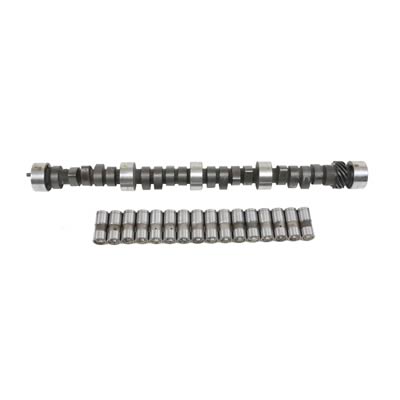Details: Vehicle 1965 Chrysler 300L
Engine: Original 413, .030 over bore
and hoping for 10-1 compression but it probably will be lower.
Heads: Closed chamber 516s with the small 1.60 exhaust valve.
Intake & carb: Stock 4-barrel
Transmission: 4-Speed manual
Rear Differential ratio: 3:23 Sure Grip
Weight: 4200lbs
Currently the short block is together.
The original cam had these numbers and is not being used.

Next up is the cam from Melling and is now in the short block

I wonder how the above cam will act in this heavy car. It will not be a high rpm use engine and looking for a lower Torque & Hp range.
Now two more camshafts are listed below. The first one is the recommended replacement cam from the Chrysler 300 International Club and is made by CamCrafters. The second is a Comp Cams RV cam that is new but 30 years, or more, old.

COMP CAM specs are shown below in 2 pictures, the cam box and the card inside with the cam.


Which is your pick for this application?
Haywire is not sure.
Engine: Original 413, .030 over bore
and hoping for 10-1 compression but it probably will be lower.
Heads: Closed chamber 516s with the small 1.60 exhaust valve.
Intake & carb: Stock 4-barrel
Transmission: 4-Speed manual
Rear Differential ratio: 3:23 Sure Grip
Weight: 4200lbs
Currently the short block is together.
The original cam had these numbers and is not being used.
Next up is the cam from Melling and is now in the short block
I wonder how the above cam will act in this heavy car. It will not be a high rpm use engine and looking for a lower Torque & Hp range.
Now two more camshafts are listed below. The first one is the recommended replacement cam from the Chrysler 300 International Club and is made by CamCrafters. The second is a Comp Cams RV cam that is new but 30 years, or more, old.
COMP CAM specs are shown below in 2 pictures, the cam box and the card inside with the cam.
Which is your pick for this application?
Haywire is not sure.
Last edited:


















